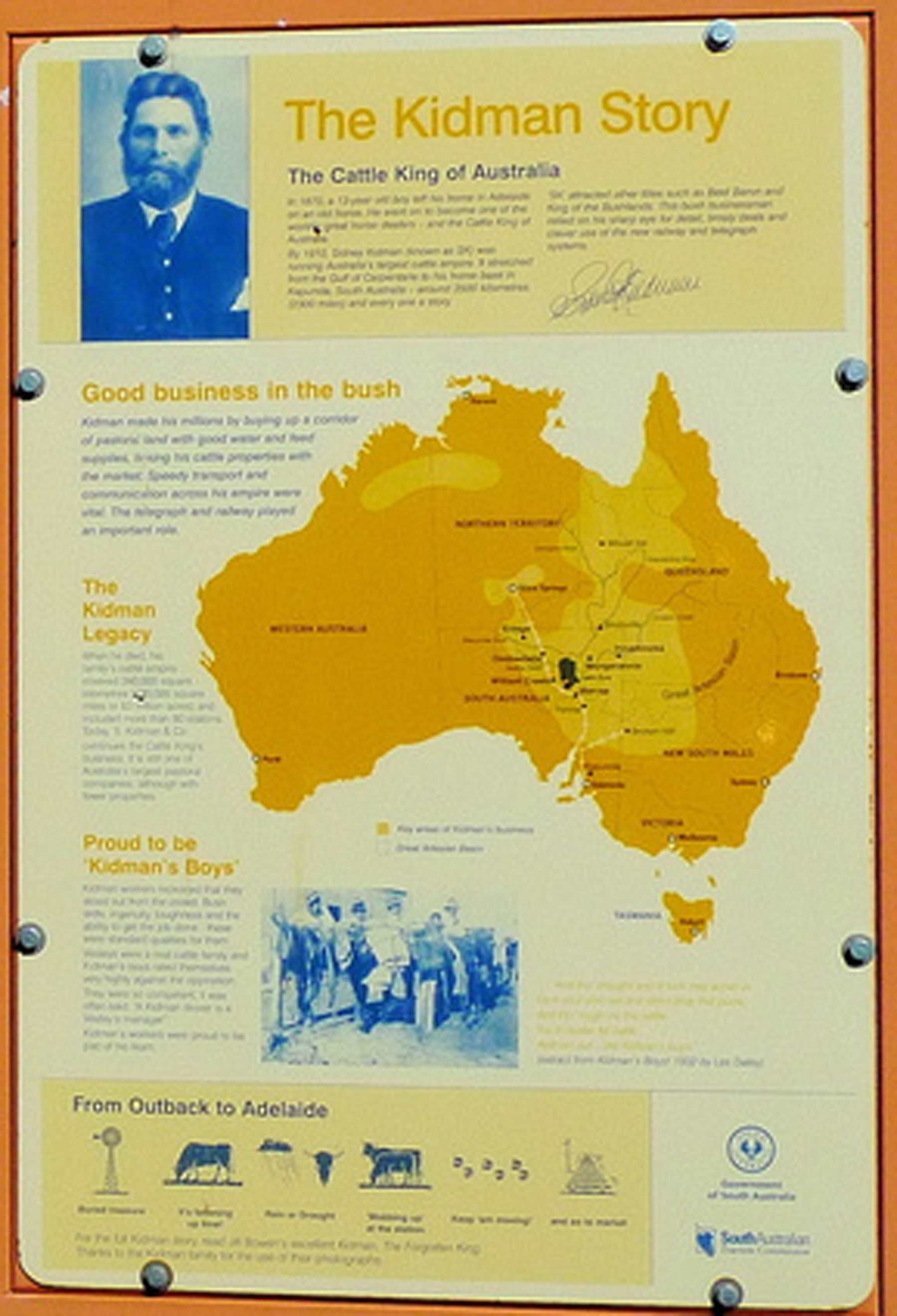Farm & Ranch
Sir Sidney Kidman “The Cattle King”

By Samantha Hall
Sidney Kidman was born in a small town in southern South Australia on the of May 9, 1857.
He was the third of three boys born to his parents who were farmers who had moved to Australia from Suffolk, England in 1849. Kidman’s father died while he was only six months old. Kidman left home not long after finishing primary school with five shillings (about a nickel) to his name and mounted on a one eyed horse. Kidman worked for drovers and graziers all across South Australia and Western New South Wales learning the ins and outs of the cattle industry and the land from both white and Native stockmen.
He even tried his hand in the shearing sheds as a roustabout. Following the discovery of copper in the western New South Wales town of Cobar in 1870, Kidman put away enough money to establish a butcher’s shop in the township to supply meat to the miners who were flooding into town.
In 1878 Kidman received an inheritance of 400 pounds from his grandfather, and he continued to work his butcher shop and began trading cattle and horses with his 400 pounds. He eventually had such an impressive string of horses put together that he was able to supply the British Army based in India with horses.
In 1886 Kidman purchased his first cattle station “Owen Springs” on the Hugh River southwest of the town of Alice Springs in the Northern Territory (right in the center of Australia). He was by then a renowned bushman and excellent cattleman who had a detailed knowledge of the country he resided on. Kidman’s land holdings continued to grow, making it possible for him to move cattle from drought affected areas to better feed and the ability to sell cattle in higher markets. Due to his expanse of land, Kidman was able to survive the depression and the otherwise crippling drought of 1902.
To read more pick up a copy of the September 2017 NTFR issue. To subscribe call 940-872-5922.
Farm & Ranch
Ag Elsewhere: Wyoming

By Tressa Lawrence
Babies are tucked away in every nook and cranny. Many ranchers across Wyoming have baby animals popping up all over this time of year.
Farm & Ranch
Ag Elsewhere: Montana

By Lindsey Monk
Another load of grain in to keep feeding the calves until the green grass can really start popping.
Farm & Ranch
Meanwhile, Back at the Ranch….

By Rayford Pullen | [email protected]
Spring has sprung and hopefully the rains will continue where our country will heal from the previous droughts and our grasses will thrive. We are especially hopeful for the Panhandle of Texas where our neighbors and friends have been dealt a deadly blow to homes, ranges, livestock, and people. Keep them in your prayers as they will not be able to return to normal for many years if at all. Having lost their ability to benefit from this great cattle market is a double whammy for all of them.
Now is the time of year when we need to take care of business as it relates to our new calves that have been hitting the ground this spring. First and foremost is vaccinating for Blackleg followed by deworming with a white wormer and the IBR complex. Blackleg is a soil-born disease and with pastures extremely short this spring our calves have been grazing the green grass as soon as it shows itself, making them even more vulnerable to picking contaminates from the soil.
To read more, pick up a copy of the April issue of NTFR magazine. To subscribe by mail, call 940-872-5922.
-

 Country Lifestyles1 year ago
Country Lifestyles1 year agoScott & Stacey Schumacher: A Growth Mindset
-

 Equine7 months ago
Equine7 months agoThe Will to Win
-

 Country Lifestyles7 years ago
Country Lifestyles7 years agoStyle Your Profile – What your style cowboy hat says about you and new trends in 2017
-

 Country Lifestyles4 years ago
Country Lifestyles4 years agoAmber Crawford, Breakaway Roper
-

 HOME7 years ago
HOME7 years agoGrazing North Texas – Wilman Lovegrass
-

 Country Lifestyles7 years ago
Country Lifestyles7 years agoDecember 2016 Profile, Rusty Riddle – The Riddle Way
-

 Country Lifestyles8 years ago
Country Lifestyles8 years agoJune 2016 Profile – The man behind the mic: Bob Tallman
-

 Country Lifestyles8 years ago
Country Lifestyles8 years agoCowboy Culture with Clay Reid – Being a Man






